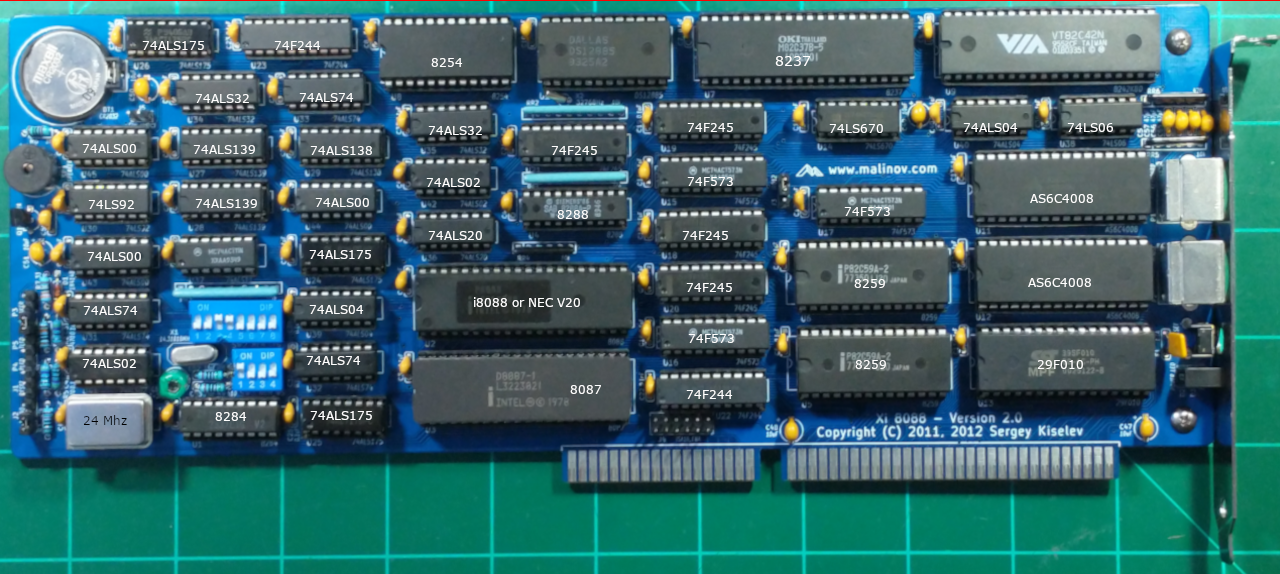Xi8088 Version 2.0: Difference between revisions
Numberformat (talk | contribs) |
Numberformat (talk | contribs) |
||
| Line 75: | Line 75: | ||
== Proposed Improvements == | == Proposed Improvements == | ||
Sometimes the non-turbo | Sometimes the non-turbo crystal fails to oscillate. The proposed improvement to this circuit is seen below. I will test it further and introduce this change in the next revision of the board. Roughly speaking the formula to determine the values of the load capacitors C1 and C2 is (Load Capacitance of the Crystal – Capacitance of the IC and PCB) x 2 | ||
For a crystal with load capacitance of 20pf (find in datasheet) and board and chip with built-in 5pf capacitance then the capacitors you should use will be around 30pf. But since capacitors have different tolerances and measuring such small capacitances is hard with shitty equipment then experimenting with different value capacitors is your best bet. | |||
[[File:ImprovedNonTurboClockCircuit2.jpg|640px]] | [[File:ImprovedNonTurboClockCircuit2.jpg|640px]] | ||
Revision as of 21:45, 18 June 2021
Introduction
Xi 8088 IBM PC/XT compatible processor board
Features
- ISA board form factor
- Support of PS/2 keyboard and mouse
- Built-in real time clock with NVRAM
Board Layout
Click on any chip for more information

Proposed Improvements
Sometimes the non-turbo crystal fails to oscillate. The proposed improvement to this circuit is seen below. I will test it further and introduce this change in the next revision of the board. Roughly speaking the formula to determine the values of the load capacitors C1 and C2 is (Load Capacitance of the Crystal – Capacitance of the IC and PCB) x 2
For a crystal with load capacitance of 20pf (find in datasheet) and board and chip with built-in 5pf capacitance then the capacitors you should use will be around 30pf. But since capacitors have different tolerances and measuring such small capacitances is hard with shitty equipment then experimenting with different value capacitors is your best bet.